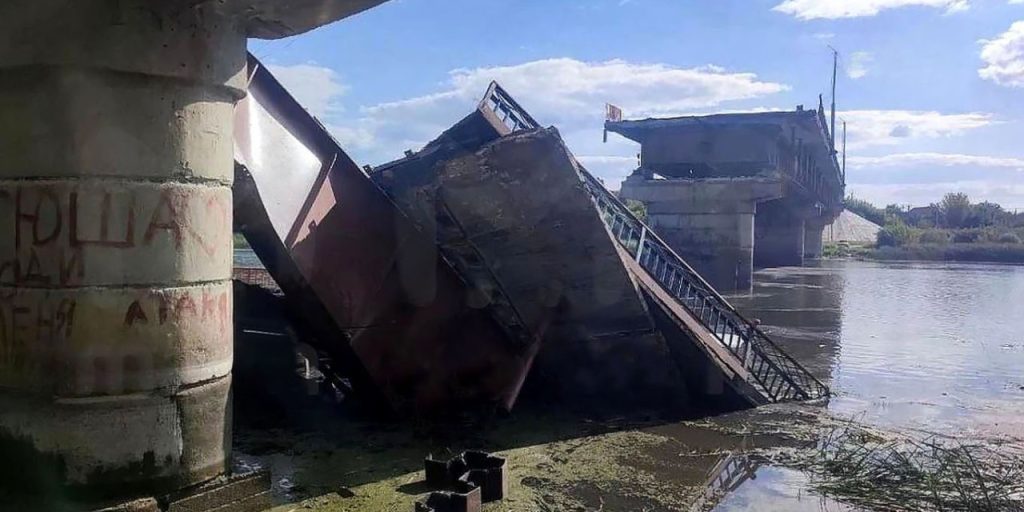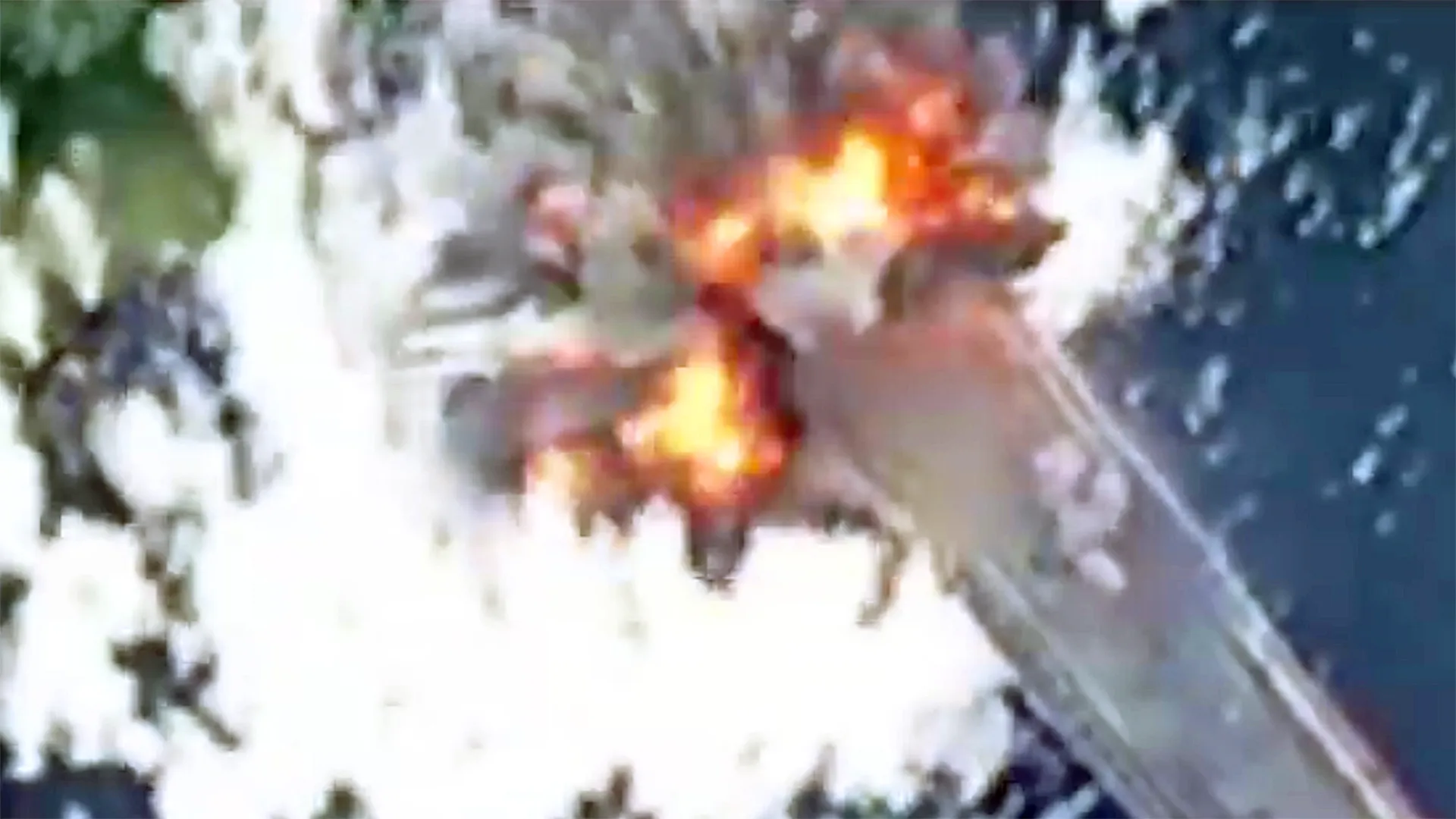Ukraine Destroys Key Russian Bridge in Kursk as Conflict Intensifies
3 min read

In a significant development in the ongoing conflict, Ukraine has successfully destroyed a crucial bridge over the Seym River in Russia’s Kursk region. This strategic strike, aimed at disrupting Russian military logistics, marks a major escalation in Ukraine’s incursion into Russian territory, which is now entering its second week. The operation near Glushkovo has reportedly severed a vital supply route used by Russian forces, potentially impeding their operational capabilities in the area.
The destruction of the bridge is part of a broader Ukrainian effort to challenge Russian control in the Kursk region, with President Volodymyr Zelensky announcing that Ukrainian troops are fortifying their positions. Zelensky described the territories captured in this operation as leverage that could be used in negotiations, suggesting that these gains could be exchanged for Ukrainian regions currently occupied by Russia.
 This cross-border operation represents Ukraine’s deepest incursion into Russian territory since the onset of the full-scale invasion over two years ago. The offensive has already prompted a significant humanitarian response, with more than 120,000 people reportedly fleeing to safety due to the conflict’s intensification. Despite these advances, Ukrainian officials have reiterated that their goal is not to occupy Russian land but to compel Moscow to negotiate a resolution on favorable terms for Kyiv.
This cross-border operation represents Ukraine’s deepest incursion into Russian territory since the onset of the full-scale invasion over two years ago. The offensive has already prompted a significant humanitarian response, with more than 120,000 people reportedly fleeing to safety due to the conflict’s intensification. Despite these advances, Ukrainian officials have reiterated that their goal is not to occupy Russian land but to compel Moscow to negotiate a resolution on favorable terms for Kyiv.
Mykhailo Podolyak, a senior aide to President Zelensky, emphasized that the Ukrainian strategy aims to force Russia into a fair negotiation process. He highlighted that the military pressure applied in the Kursk region is intended to persuade Russia to engage in talks from a position of weakness.
In the wake of these developments, Ukrainian military chief Oleksandr Syrsky reported progress in the offensive. According to Syrsky, Ukrainian troops have advanced between one to three kilometers in several areas, with ongoing efforts to capture the village of Mala Loknya, situated approximately 13 kilometers from the border. The Ukrainian military is hopeful of taking numerous prisoners in the ongoing engagements.
As Ukraine pushes further into Russian-held territory, Russia’s Belgorod region, which borders Ukraine, is preparing for its own response. Starting August 19, local officials will evacuate residents from five villages near the border, citing the escalating conflict as the reason for the measures. Belgorod Governor Vyacheslav Gladkov announced the closure of access to these settlements and efforts to assist residents in relocating.
Meanwhile, Russia is also making advances in Ukraine’s eastern regions. Moscow has recently reported the capture of Serhiivka, one of several towns secured by Russian forces in recent weeks. This progress brings Russian troops closer to Pokrovsk, a key logistical hub for Ukrainian forces. The situation in Pokrovsk is becoming increasingly dire, with reports of Ukrainian shelling and civilian casualties in the area. Sergiy Dobryak, head of Pokrovsk’s military administration, has urged residents to evacuate as Russian forces approach the city’s outskirts.
In Donetsk, a region under Russian control since 2014, Ukrainian shelling has resulted in casualties, with at least seven people reported wounded in a recent strike on a shopping center. The regional head of Donetsk reported that over the past 24 hours, three civilians have been killed and five injured.
In Crimea, which was annexed by Russia in 2014, Ukrainian forces attempted to strike a bridge built under President Vladimir Putin’s orders. The Russian defense ministry claimed that the missiles targeting the Kerch Bridge were intercepted and destroyed, continuing the pattern of Ukrainian attacks on infrastructure crucial to Russia’s control over the peninsula.
Overall, the conflict remains highly volatile, with significant military actions and ongoing humanitarian impacts as both sides push their respective agendas.